Abstract
Populations of Drosophila were trained by alternately exposing them to two odorants, one coupled with electric shock. On testing, the flies avoided the shock-associated odor. Pseudoconditioning, excitatory states, odor preference, sensitization, habituation, and subjective bias have been eliminated as explanations. The selective avoidance can be extinguished by retraining. All flies in the population have equal probability of expressing this behavior. Memory persists for 24 hr. Another paradigm has been developed in which flies learn to discriminate between light sources of different color.
Keywords: learning, memory, odor discrimination, color vision
Full text
PDF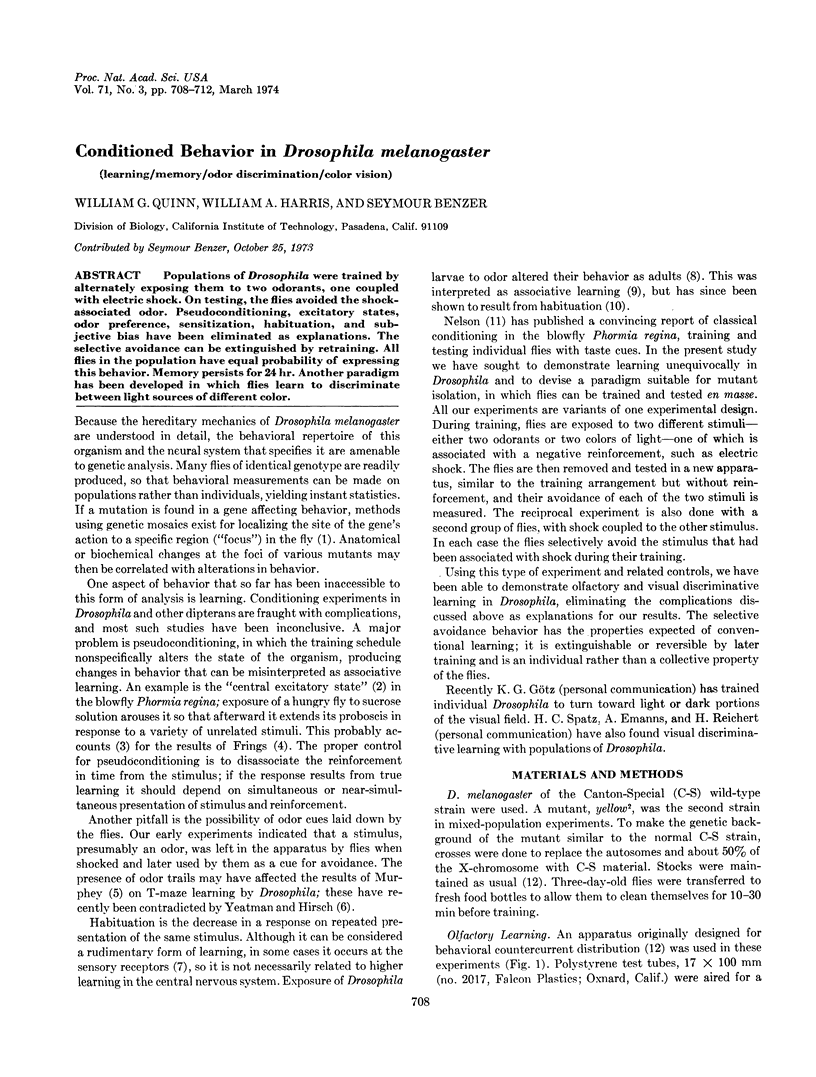
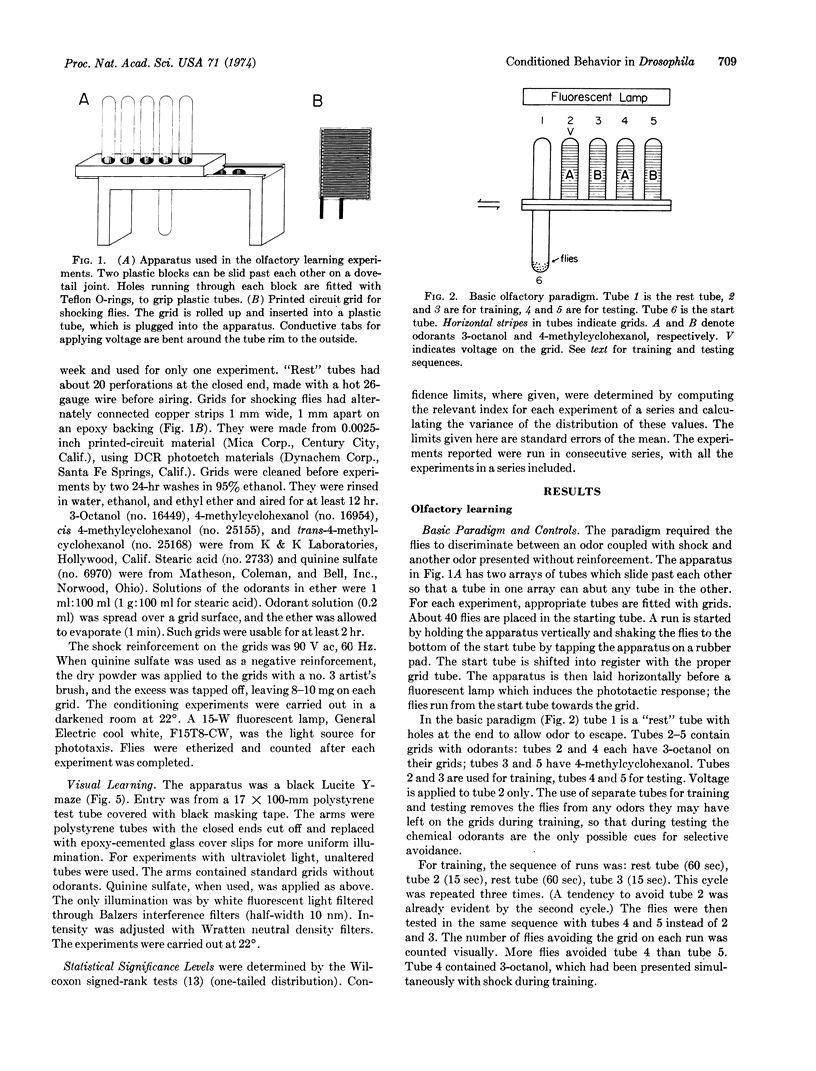
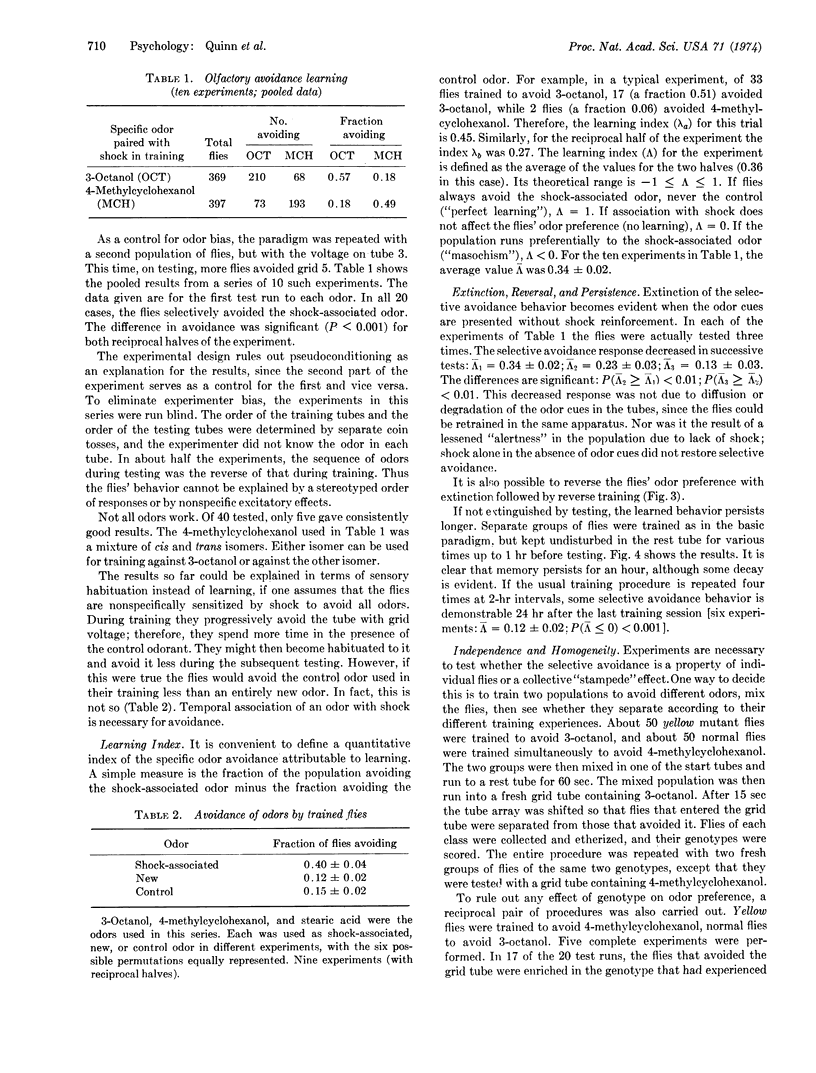
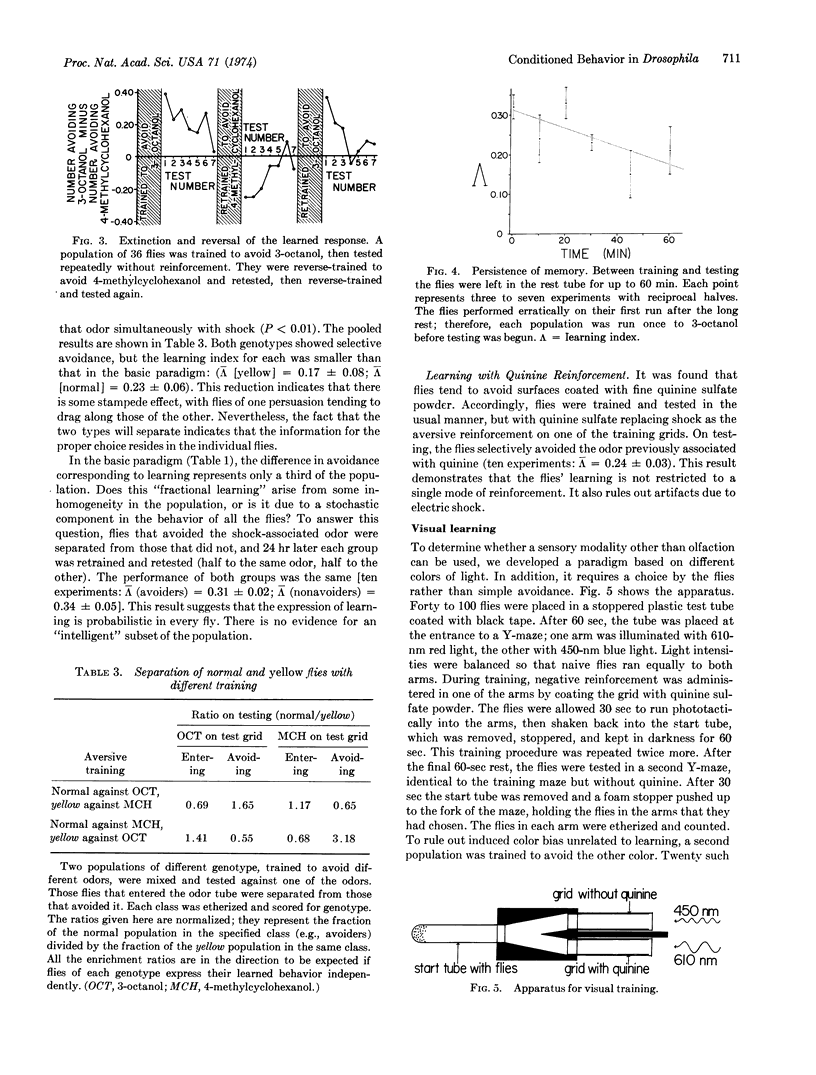
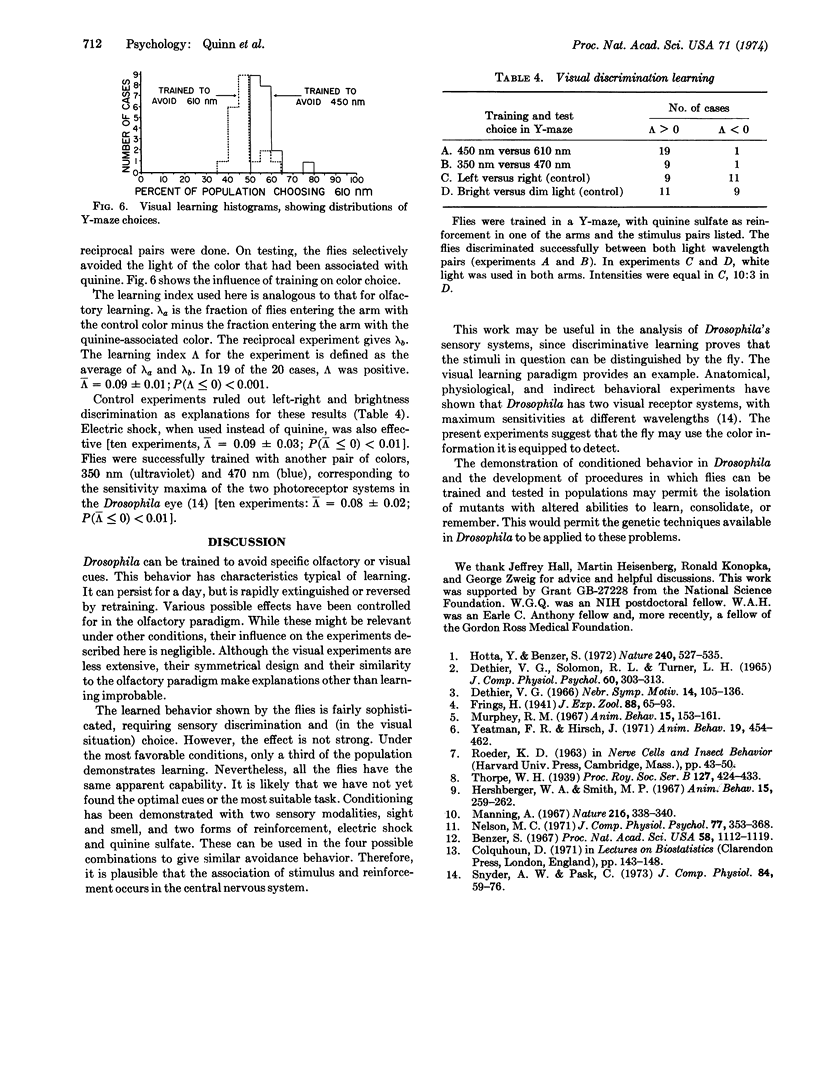
Selected References
These references are in PubMed. This may not be the complete list of references from this article.
- Benzer S. BEHAVIORAL MUTANTS OF Drosophila ISOLATED BY COUNTERCURRENT DISTRIBUTION. Proc Natl Acad Sci U S A. 1967 Sep;58(3):1112–1119. doi: 10.1073/pnas.58.3.1112. [DOI] [PMC free article] [PubMed] [Google Scholar]
- Dethier V. G., Solomon R. L., Turner L. H. Sensory input and central excitation and inhibition in the blowfly. J Comp Physiol Psychol. 1965 Dec;60(3):303–313. doi: 10.1037/h0022557. [DOI] [PubMed] [Google Scholar]
- Hershberger W. A., Smith M. P. Conditioning in Drosophila melanogaster. Anim Behav. 1967 Apr-Jul;15(2):259–262. doi: 10.1016/0003-3472(67)90008-5. [DOI] [PubMed] [Google Scholar]
- Hotta Y., Benzer S. Mapping of behaviour in Drosophila mosaics. Nature. 1972 Dec 29;240(5383):527–535. doi: 10.1038/240527a0. [DOI] [PubMed] [Google Scholar]
- Manning A. "Pre-imaginal conditioning" in Drosophila. Nature. 1967 Oct 28;216(5113):338–340. doi: 10.1038/216338a0. [DOI] [PubMed] [Google Scholar]
- Murphey R. M. Instrumental conditioning of the fruit fly, Drosophila melanogaster. Anim Behav. 1967 Jan;15(1):153–161. doi: 10.1016/s0003-3472(67)80027-7. [DOI] [PubMed] [Google Scholar]
- Nelson M. C. Classical conditioning in the blowfly (Phormia regina): associative and excitatory factors. J Comp Physiol Psychol. 1971 Dec;77(3):353–368. doi: 10.1037/h0031882. [DOI] [PubMed] [Google Scholar]
- Yeatman F. R., Hirsch J. Attempted replication of, and selective breeding for, instrumental conditioning of Drosophila melanogaster. Anim Behav. 1971 Aug;19(3):454–462. doi: 10.1016/s0003-3472(71)80098-2. [DOI] [PubMed] [Google Scholar]


